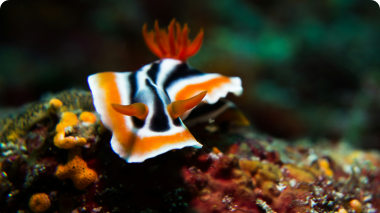With every soul-nourishing walk in the woods to devouring a chocolate fudge cake, we reap the rewards from a molecule called dopamine. It's renowned as one of our main feel-good chemicals. Neurons in our brains release it when we anticipate getting something we desire, like the allure of a tropical getaway or reaching the next level in Minecraft. In that sense, dopamine helps us focus on achieving our goals. But it’s also widely regarded as the reward-seeking molecule that makes drugs, sex and winning so addictive. Dopamine’s one electric neurotransmitter.
But its intoxicating reputation for transmitting our brains’ electrical signals into conscious emotional pleasures can obscure how important dopamine is beyond the brain. Just as Daniel Craig is not bound to his character James Bond, neither are neurotransmitters, such as dopamine, nailed to their neural namesake. Neurotransmitters have a secret life, moonlighting in various jobs throughout the body in ways unrelated to our conscious feelings. Researchers are amassing evidence that reveals how our diet and medicine can shape the delicate balance of these chemicals in organs outside of our bodies’ conscious realms. So-called “neuro”-transmitters have a wealth of hidden talents we’re beginning to appreciate.
And the influence of neurotransmitters outside our neural neighbourhood didn’t start with us. Dating back to ancient microbes, these mysterious chemicals have seeped into the lives of diverse organisms. Scientists have started unravelling how early animal life-forms have long been harnessing the powers of neurotransmitters — in complete absence of any neural circuitry. What good is a neurotransmitter to creatures without a brain?
Well, this is somewhat like asking the distinction between a sandwich and a burger — It’s often more about the context. Neurotransmitters are chemicals released from and received by neuron cells to communicate with each other. But these exact same chemicals are also released and received by other types of cells, either far from the brain, or in bodies with no brain at all. Often they’re called hormones when found outside the brain, but this term is fraught with its own ambiguities. Current definitions don’t clearly distinguish hormones from other types of smaller or short-distance signalling molecules. To avoid confusion through such semantics, plant biologist Professor Victoria Roshchina recommends ditching the name “neurotransmitter” altogether and suggests referring to them instead as “chemical biomediators” for their roles in balancing homeostatic processes, like regulating body temperature.¹
Neurotransmitters, in other words, have a non-neuro second life. Take the humble sea sponge, one of our most distant and minimalistic animal relatives. Even though it has no neurons, it still relies on the talents of neurotransmitters, including GABA and glutamate. In us and other brainy animals, these molecules work like on-and-off switches for neurons — glutamate fires our brain cells up whilst GABA presses on pause. In sea sponges, the opposing actions of these two chemical transmitters cause contractions in a sort of “sneezing” action to dispel build-ups of debris in sponges’ pores.
Curiously, these two neurotransmitters, which our bodies produce in abundance to serve many roles, are also manufactured by our muscle cells to make them relax and contract — the same molecule performing a similar function for wildly different organisms. Even for evolution, that’s a neat trick.
* * *
Down in the depths, away from our brain, dopamine lives another life within our waste filtration unit. Inside the wound-up spaghetti structured tubes of each kidney, the organ’s cells directly produce their own dopamine, with amounts fluctuating with the varying salt levels in our blood. Crucially, it keeps our pressure in check by directing excess salts and water circulating the blood into our pee, accounting for roughly 60% of the salt we excrete.²
There is something of a Goldilocks zone for dopamine levels; patients suffering chronic high blood pressure, or hypertension, have been found with either abnormally low or elevated dopamine levels, but exactly what causes such irregularities of dopamine in the kidneys remains unclear.³ Scientists recently found that if just one of the five kidney-based dopamine receptors starts to malfunction, people tend to become less tolerant to salt and their blood pressure increases.
Dopamine’s hidden talents don’t just stop at balancing salts. In the pancreas, at the core of our bodies’ blood-sugar regulatory department, dopamine, together with fellow neurotransmitter norepinephrine, orchestrates the key hormonal actors — insulin that lowers blood-sugar and glucagon that raises it.⁴ During happy hour cocktails, I imagine my pancreatic cells rapidly manufacturing their own dopamine to direct glucagon to hold off, and insulin to buffer this monumental sugar load — which ironically, the dopamine-seeking centres of my brain are responsible for.
Studies in humans and rodents show that levels of dopamine in the blood sharply spike following consumption of a ‘mixed meal’ containing protein and carbs. Research led by molecular biologist Zachary Freyberg has found that cells in the pancreas finely tune levels of dopamine production in response to glucose to help regulate insulin’s release and blood-sugar homeostasis.⁵
Another major feel-good chemical, Serotonin, famed for releasing sensational feelings of euphoria, is no loyal brain chemical either. In the mucus-lined, bacterial heaven of twisted organs that mulch up our food, serotonin plays an unsung role. The vast majority (95%) of our body’s serotonin is actually produced not in the brain but in the gut, mostly by special gut cells — awkwardly named enterochromaffin cells — that snuggly fit within the gut wall lining.⁶ This gut serotonin is vital for maintaining homeostasis in the gut, signalling inflammation and directing a variety of our body’s immune response teams, including natural killer cells — a kind of white blood cell that destroys other cells afflicted by pathogens — to combat infections.
Serotonin imbalance is deeply embedded within gastro disorders such as inflammatory bowel disease (IBD), irritable bowel syndrome (IBS) and gluten allergy (like coeliac disease). But just exactly what causes this imbalance isn’t so clear. Researchers have shown that some of the bacterial residents in our gut microbiome produce metabolites (e.g., short-chain fatty acids, bile acids), causing enterochromaffin cells to release more serotonin. This elevated serotonin environment can sometimes further snowball harmful inflammation by promoting the growth of non-beneficial bacteria, such as E. coli.⁷
Diet might also play a role in adjusting serotonin levels, particularly when we consume foods high in the essential amino acid tryptophan (Trp) — one of serotonin’s key building blocks — or some processed-food additives. In a 2022 study, researchers found that when mice are chronically exposed to the recently FDA-banned food dye, Allura Red AC (Red 40), their levels of gut serotonin and susceptibility to colitis, a swelling or inflammation of the colon, increase.
Serotonin can also have competing effects. For instance, whilst brain serotonin promotes bone growth, gut serotonin is thought to inhibit it. Neurotransmitters in the brain are independent from those elsewhere since they cannot cross the body’s blood-brain barrier. However, certain medications can cross this barrier, so treatments targeting the brain can also knock the balance of neurotransmitters elsewhere. For instance, bromocriptine, a medication for treating Parkinson’s and other conditions, once thought to solely function through dopamine-sensitive regions in the brain, has now been shown to directly influence insulin and glucagon-releasing cells in the pancreas, combating type II diabetes.⁸
Understanding neurotransmitters’ unconscious roles is also helping advance the development of new medicines that directly influence their non-neural signalling. A 2023 study, for example, investigated serotonin’s role in driving obesity. The researchers showed how serotonin reduces the beneficial burning (thermogenesis) of healthy brown fat, a type of fat that helps regulate your body temperature in cold conditions. Since burning brown fat increases energy expenditure and also improves metabolism, scientists are now exploring medications that lower blood serotonin as a strategy to treat obesity.
* * *
Many of the neurotransmitters we that we know underlie how driven and happy we feel are also produced by microbes. For example, bacteria living within the gut of newborn mice can directly produce their own serotonin.⁹ A 2024 study found that this bacterial-produced serotonin turned off immune defensive response of the mouse’s white blood cells, which allowed the bacteria to safely live within the newborn’s gut.
These sorts of animal-bacterial neurotransmitter interactions have been around a long time — some 700 million years — well before nervous systems were even a thing. A 2023 study, for example, provided exciting glimpses into neurotransmitters' rich, evolutionary history, bridging non-neural connections between primordial, single-celled life with Earth’s simplest animals. Specifically, the researchers showed how a sea sponge behaves in response to dopamine-like chemicals that it has receptors for but that it can’t produce itself, unlike its life-long bacterial partners, which can.
One popular theory proposes that neurotransmitters first evolved as defence chemicals that produced injury-related signals. It’s thought that certain chemicals released during wound-healing responses eventually became signals for coordinating whole-body defence strategies.¹⁰ Serotonin, for example, is thought to have emerged as a chemical byproduct from melatonin biosynthesis, which was likely used by ancient bacteria as an antioxidant, providing protection from the sun and early oxygen levels.¹¹
Even plants make use of neurotransmitters for some quick-fire defences. Within minutes of an insect nibbling its leaf, glutamate is released, alerting distant leaves all over the plant to up their defences.¹² Likewise, serotonin is one of the neurotransmitters that stinging nettle plants use, alongside acetylcholine and histamine and others, to irritate human skin with a burning tingle upon contact with its bristly hairs.
Neurotransmitters are also key for the millimetre-sized, flat pancake-like marine animal, Trichoplax adhaerens. Roughly translated as ‘sticky, hairy plate’, it’s part of a group of placozoans, some of the simplest creatures alive. They have no nervous system — they’re not much more than a flat aggregation of cells. Yet surprisingly, eating for this strange species is a social occasion. But how does it manage to chow with its fellow pancake blobs while staying alert to any danger?
Delving into this puzzle recently, researchers showed how these animals are able to recoil in different directions using adrenaline, the fight-or-flight neurotransmitter. It is responsible for coordinating the collective beating direction of all the microscopic (sticky) hairs, named cilia, that help its glide like a snail along the seafloor, the researchers found.¹³
So, within the unconscious corners of life, “neuro” -transmitters have long been quietly maintaining the health and performance of our non-brain parts — from the moment you wake up to pee, to the bacterial harmonies at work in your gut, to your next attempt at tackling a unwieldy growth of tingling spring weeds.







